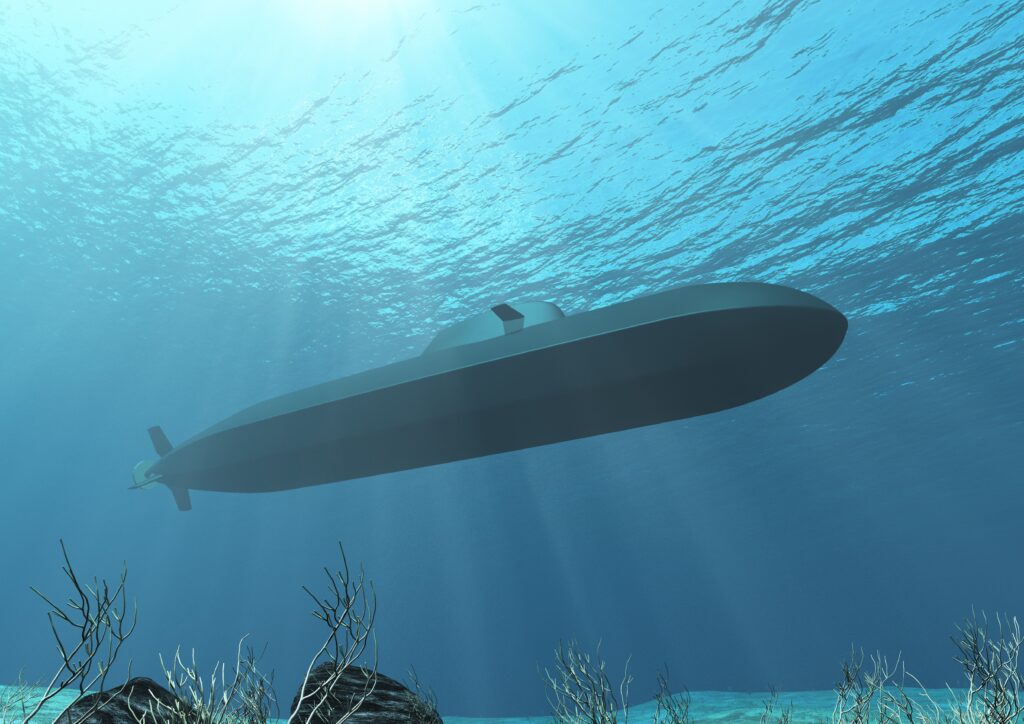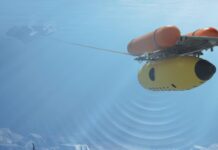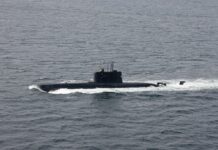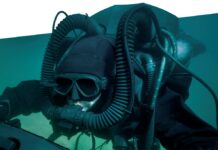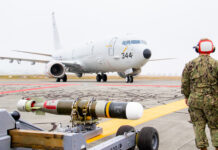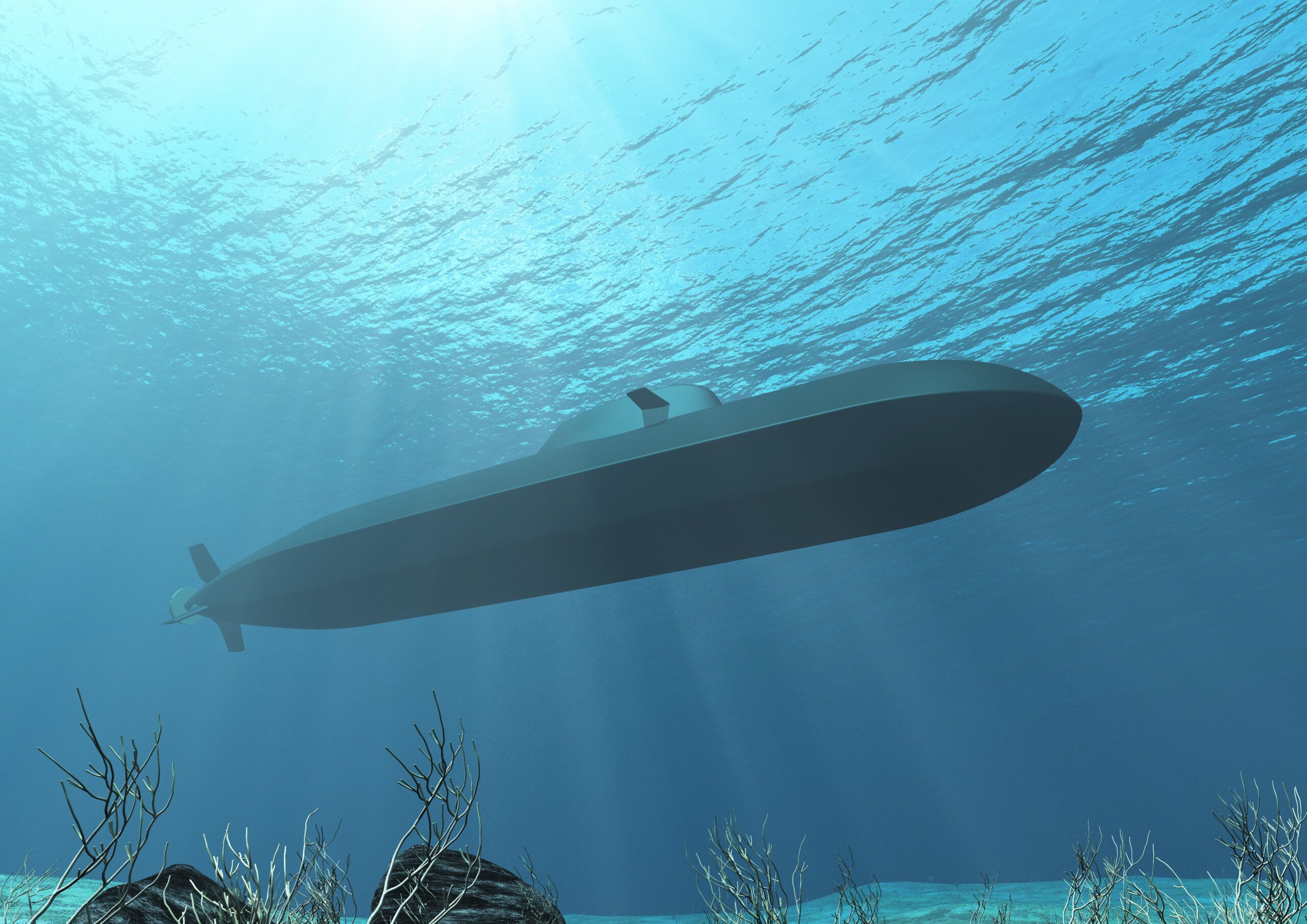
Maintaining track: German-Norwegian submarine programme stays set to deliver first boat on time
Dr Lee Willett
The German/Norwegian combined submarine programme to deliver the Type 212 Common Design (T212CD) diesel-electric submarine (SSK) for the German Navy and Royal Norwegian Navy (RNoN) remains on track to deliver a first boat into service in 2029, programme officials told the Undersea Defence Technology (UDT) conference in Oslo in March. Moreover, the increasing challenge presented for NATO navies by Russian activities in the underwater domain has prompted the two navies to engage with their industrial partners to see if boats in the combined T212CD fleet can be delivered into service more quickly.
The T212CD programme is set to deliver up to 12 boats – prospectively, six for each navy. Back in 2016, a common requirements set and common design were agreed. The combined procurement was formally announced in 2017, with a first batch of six boats planned at that point, two for Germany and four for Norway; a contract was issued for this batch in 2021. In December 2024, four more German boats were contracted, taking the Deutsche Marine’s total to six. Norway’s last two boats are awaiting parliamentary approval.
In 2022, the programme passed through its preliminary design review (PDR). Production got underway in 2023. In 2024, the programme’s critical design review (CDR) was completed. Passing the CDR point was a crucial milestone in aiming to get the first boat to sea on time, Captain Oystein Storebo, an RNoN officer and submarines programme director at Norway’s Ministry of Defence (MoD), told the UDT conference. The CDR milestone was also “where you really set the pace for where we are now,” Captain Bernd Weiss, a German Navy officer and programme co-ordinator for Germany/Norway Naval Defence Materiel Co-operation in the German MoD, added.
Harbour acceptance and sea acceptance tests for the first boat are set for 2027 and 2028, respectively. A common first-of-class boat is to be accepted on behalf of both navies, Capt Weiss added. “The German/Norwegian submarine project is on track. So far, we have reached all the milestones,” said Capt Storebo.
The first boat set to be operational, in 2029, is for the RNoN. Germany’s lead boat is set for delivery in 2032. The final T212CD delivery – of Norway’s prospective sixth boat – will take place in 2038. The submarines are being built by thyssenkrupp Marine Systems (tkMS) in Kiel, Germany. They will be maintained at a new facility at Haakonsvern, Bergen, in Norway. Overseeing delivery is a joint programme office in Kiel, supported by sites in Bergen and Koblenz, Germany.
Operational availability
Delivering 12 boats within a decade is a tight schedule, but underlines the importance of timeliness in providing the new capability for both navies, given the need to counter the increased underwater threat and avoid capability gaps from in-service boats. The threat is also underlining the need to deliver the boats perhaps even more quickly than currently planned. “We are asking industry actually right now also to accelerate, because times are changing; we need to accelerate,” said Capt Weiss.
Once the boats are in service, having a tight schedule of readiness for operations is also crucial. “The main area is to produce operational availability of submarines,” Capt Weiss continued. While noting that both navies, their respective procurement organisations, and industrial partners are working through various processes to ensure operational availability of the first boat on time and then ‘close the loop’ to maintain that availability, the operational availability requirement underlined that “the first priority [for the programme] … is basically time,” Capt Weiss added. “Cost is second. Money is not available in unlimited amounts … but then again cost is second to time, [when time means] availability.”
“What matters is operational, available submarines,” Capt Storebo added, pointing out the partnership programme’s focus on improving integrated commonality across all aspects of the capability – including procedures and protocols, training and exercising, but especially maintenance – to support the requirement for enhanced operational availability.
“We are in the process of building submarines and delivering submarines,” Capt Storebo continued, “Programmes like this tend to be very obsessed about the submarine itself and the design itself. That’s why we also are focusing on the partnership, so that everything around it – the boring bits that really are contributing to what’s mattering most – is also very focused in this programme.”
Moreover, operational availability is enhanced by the number of boats in the programme, and in the two navies’ respective fleets. “Strength is in numbers, so a higher number of a bigger fleet will give you better individual availability. It’s as simple as that,” said Capt Weiss.
Capability
Alongside improved availability, a core tenet of the T212CD programme is delivering improved capability. Achieving this is being enabled by building on a proven design.
The T212CD design is derived from that of the Type 212A SSK, in service with the German and Italian navies. At 73 m long and 2,800 tonnes dived displacement, the T212CD is larger than the 57.1 m/1,830 tonne T212A.
Evolving the design includes the boat itself, but also the capabilities it carries. “We are taking the proven design further, adding the new requirements set, and of course adding future-proofed technology,” said Capt Weiss, noting that future-proofing the technology includes not only enhanced sensor and weapons developments but enabling emerging concepts like artificial intelligence (AI) and its impacts to be considered.
The T212CD’s increased size combined with its state-of-the-art fuel-cell air-independent propulsion (AIP) system will help generate an operational endurance that will see boat able to stay dived for several weeks (according to Capt Storebo). For the RNoN, using AIP for the first time will bring potential game-changing capability: on operations, its in-service Ula class SSKs must ‘snort’ regularly to top up their batteries when seeking to run covertly at low speed: ‘snorting’, of course, compromises covertness. The T212CD will help the navy move away from this: “It’s going to be a very, very different submarine for Norway,” said Capt Storebo.

Within a common mission requirements set, the T212CD is designed to support five core warfare roles, either as single or multiple tasks within the same mission. These roles are: anti-surface warfare (ASuW), anti-submarine warfare (ASW), intelligence, surveillance, and reconnaissance (ISR), special forces operations, and land attack. The flexibility in design to provide this broad spread of capabilities generates credible, scalable firepower and robust self-defence, said Capt Storebo. It also provides capacity to add new capability throughout the boats’ service lives.
The sensors and effectors supporting these task outputs will be integrated through the boat’s new ORCCA combat management system (CMS), being delivered by kta naval systems (a joint venture between tkMS and Norway’s Kongsberg Aerospace and Defence).
The enhanced firepower and robust self-defence output is reflected in some of the core systems being considered as future effectors for the T212CD. Some of these effectors may help expand the roles the boats can cover. They also underline how much the requirement for naval combat capability has evolved at pace in recent years to encompass higher-end at-sea and from-the-sea warfighting capability. The at-sea capability set may include the addition of both defensive and offensive systems. In terms of defensive effectors, Capt Weiss highlighted two potential inclusions.
First, the Interactive Defence and Attack System for Submarines (IDAS) anti-air warfare (AAW) weapon – in development by the ARGE IDAS Consortium, comprising Howaldtswerke-Deutsche Werft (HDW), Diehl BGT Defence, and Kongsberg – offers capability to target helicopters and low-flying maritime patrol aircraft operating in the ASW role. Bringing an AAW capability for a submerged submarine will change the nature of ASW, said Capt Weiss. Although IDAS may not be available in time for the first T212CD boat, the option will be there in due course, he added.
Also of note in the defensive ASW role, and mentioned in the UDT briefing, is Atlas Elektronik’s in-development SeaSpider anti-torpedo torpedo system, which provides a hard-kill capability for tackling inbound torpedoes.
For the T212CD’s own offensive torpedo capability, Capt Weiss noted that discussions have been taking place with Italy regarding the WASS Black Shark Advanced (BSA) weapon. A modernised Atlas Elektronik DM2A4/5 SeeHecht is already part of the T212CD programme plan.
While the two navies are co-operating on the development of Kongsberg’s Naval Strike Missile (NSM) and the Kongsberg/Diehl/MBDA Deutschland Super Sonic Strike Missile (3SM), the focus here is for surface ship fits. A submarine-launched version of NSM is a development option that other navies, including the Spanish Navy, are understood to be considering: however, despite apparent German Navy and RNoN interest in such a capability to meet the T212CD land-attack requirement, funding would need to be provided to underpin such interest and development.
Doubling down
Delivering improved submarine availability and capability – and more quickly – requires integrated collaboration at the navy-to-navy and industry-to-industry levels, and between the navies and industry. The strategic-level partnering between the two countries, the navies, and the respective industrial bases is crucial here.
One key step taken with industry to increase submarine production capacity is the opening of a second production line. Capt Weiss explained that the new facility, at Wismar, Germany, will provide capacity to support production of the additional six boats.
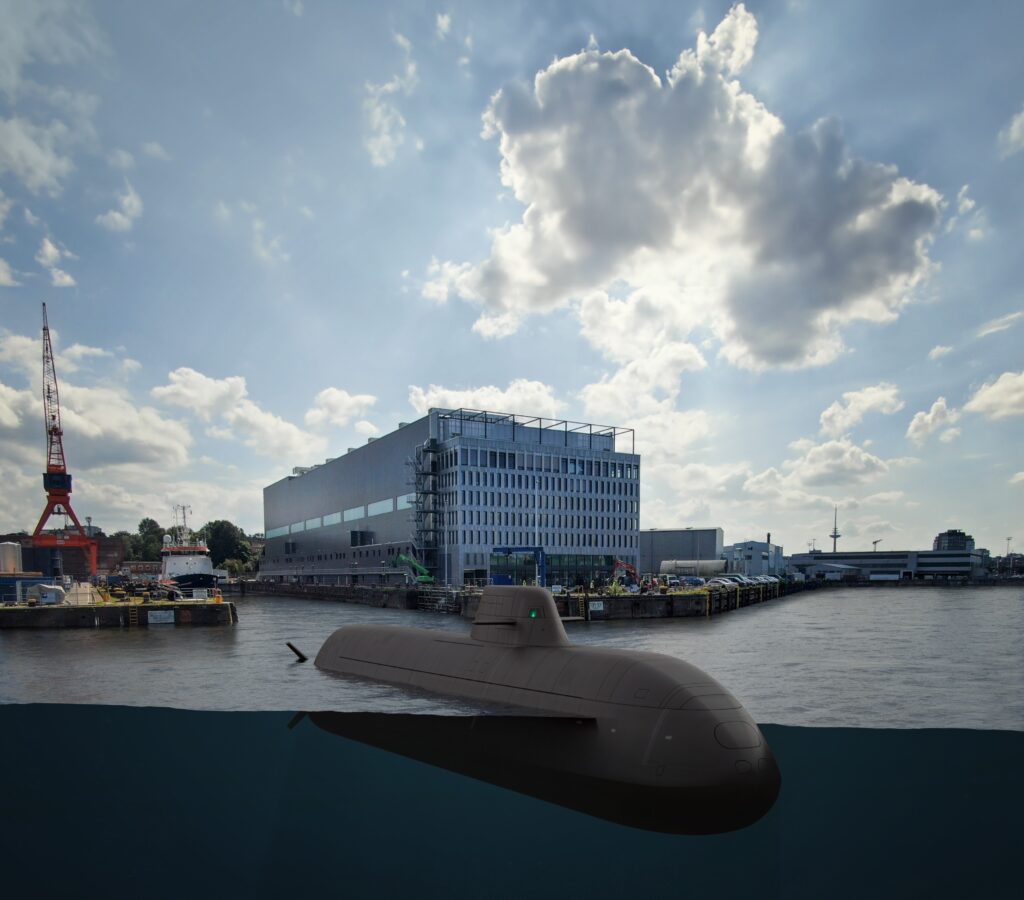
Capacity remains an important point in the T212CD programme, including in maintaining the boats. The new maintenance facility at Haakonsvern will only have capacity to maintain nine boats, but the programme may number up to 12 – and more, if other partners come onboard. So, Capt Weiss explained, finding more maintenance capacity is something that could be discussed with potential new partners.
Commonality and compromise
Something not for discussion with potential new partners, however, is changing the boat’s design. “That will be out of the question, that’s very important to understand,” said Capt Storebo.
For Germany and Norway, the T212CD requirements set demonstrated the striking of a balance – in other words, compromise – between the two navies’ needs, Capt Weiss explained. While sovereign national requirements were still met, the overall outcome was a common – and improved – requirements set around which the design was based.
The compromise in the design was set in the development of the original requirements. The requirements set is now established in a memorandum of understanding (MoU) between the two navies; the MoU, said Capt Storebo, has been structured with the flexibility to meet other partners’ different requirements.
When first assessing options for replacing its Ula class boats, the RNoN quickly understood the benefits of partnering in programmatic and operational terms to deliver benefits in building the boats collaboratively. Norway noted that all the different medium-sized regional navies were operating different submarine designs. “If you want to gain benefits in the future, you have to really look into the same configuration, [and] you have to have a common and identical design. That was a precondition for Norway,” said Capt Storebo.
The T212CD programme is representative of wider naval cooperation between Germany and Norway, encompassing everything from research and development, new technology exploitation, capability development, training and exercises, personnel exchanges, operations including procedures, and capabilities across the operational roles, all underpinned by navy-to-navy and industry-to-industry engagement.
